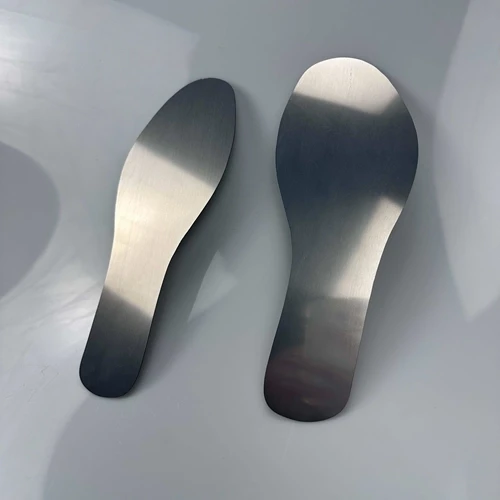- Phone:+86-17331948172 +86-0319-8862898
- E-mail: inquiry@puxingclamp.com
Nov . 27, 2024 08:59 Back to list
Micro Hose Clamp Manufacturers for High-Quality and Durable Solutions
The Comprehensive Guide to Micro Hose Clamps Manufacturing
Micro hose clamps are essential components in a wide array of industries, including automotive, plumbing, and appliance manufacturing. They are designed to provide a secure and leak-proof connection for hoses, ensuring that fluids or gases flow smoothly without any risk of spillage. In this article, we will explore the intricacies of micro hose clamps and the process of manufacturing them in specialized factories.
Understanding Micro Hose Clamps
Micro hose clamps are smaller versions of standard hose clamps, which makes them suitable for applications where space is at a premium. These clamps are often used in applications such as medical devices, small engines, and other equipment that requires precise fluid management. They feature a band that encircles the hose and a screw mechanism that tightens the band to create a secure bond. The essential attributes that define a good micro hose clamp include durability, corrosion resistance, and the ability to withstand varying pressures.
The Manufacturing Process
The production of micro hose clamps involves several critical steps that ensure quality and precision
. Here’s a brief overview of the manufacturing process1. Material Selection The first step in manufacturing micro hose clamps is selecting the right materials. Stainless steel, plastic, and other alloys are commonly used due to their strength and resistance to corrosion. The material must be chosen based on the intended application and environmental conditions.
2. Cutting and Shaping Once the materials are selected, they are cut into strips that will form the clamp. The strips are then shaped into a circular band that will go around the hose. Precision cutting and forming equipment are essential to achieve the correct dimensions.
3. Adding the Screw Mechanism The screw mechanism is a critical component that allows for the adjustable tightness of the clamp. In this step, holes are drilled into the band, and a nut is attached to fit the corresponding screw. The screw must be manufactured with precision to ensure smooth operation.
micro hose clamps factory

4. Surface Treatment To enhance durability and resistance to environmental factors, the clamps undergo surface treatments such as galvanizing or coating. This step is vital for preventing rust and ensuring longevity, especially in outdoor applications.
5. Quality Control Before the clamps are packaged, they undergo rigorous testing to ensure they meet industry standards. Quality control measures include stress tests, corrosion resistance checks, and dimensional accuracy assessments. This step is crucial in maintaining the quality and reliability of the final product.
6. Packaging and Distribution After passing quality control, the micro hose clamps are packaged carefully to prevent damage during transportation. Factories often offer a variety of packaging options, including bulk packaging for industrial buyers and retail packaging for smaller consumers.
Innovation in Manufacturing
With the advancement of technology, micro hose clamp manufacturing is continuously evolving. Factories are increasingly adopting automation and robotics to enhance productivity and precision. Computer-aided design (CAD) software allows for improved product design and prototyping, ensuring that clamps meet specific requirements for various applications.
Additionally, sustainable practices are becoming a focus in the manufacturing industry. Many factories are implementing eco-friendly practices by utilizing recyclable materials and reducing waste during production. This not only helps the environment but also appeals to environmentally-conscious consumers.
Conclusion
Micro hose clamps play a crucial role in ensuring the proper functioning of a myriad of devices and systems. Understanding the manufacturing process of these essential components highlights the precision and care that goes into their production. As technology advances, the factories that produce micro hose clamps will continue to innovate, striving for higher quality standards while maintaining sustainability. The demand for reliable and efficient hose connection solutions will keep this industry thriving in the years to come, making micro hose clamps a vital element across diverse sectors.
-
Large Stainless Steel Adjustable American Type Hose Clamp - Hebei Pux Alloy Technology Co., Ltd|Corrosion Resistance&High Breaking Torque
NewsJul.30,2025
-
Large Stainless Steel Adjustable American Type Hose Clamp - Hebei Pux Alloy Technology Co., Ltd
NewsJul.30,2025
-
Large Stainless Steel Adjustable American Type Hose Clamp - Hebei Pux Alloy Technology Co., Ltd|Corrosion Resistance&Industrial Applications
NewsJul.30,2025
-
Large Stainless Steel Adjustable American Type Hose Clamp-Hebei Pux Alloy Technology Co., Ltd|Corrosion Resistance, Adjustable Design
NewsJul.30,2025
-
Large Stainless Steel Adjustable American Type Hose Clamp - Hebei Pux Alloy Technology Co., Ltd. | High Breaking Torque & Corrosion Resistance
NewsJul.30,2025
-
Large Stainless Steel Adjustable American Type Hose Clamp - Hebei Pux Alloy Technology Co., Ltd
NewsJul.30,2025




